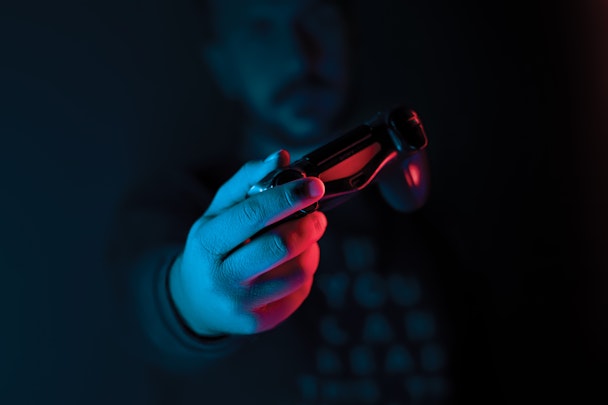To build successful brands in gaming, marketers need to create a character
Mike Craddock of gaming specialist Kairos looks at how brands show up in the still-ballooning gaming space, arguing that they need to think less about the words and more about the ‘character’ that says them.

Entering the gaming space? Think about your brand's 'character', says Kairos. / Mahdi Bafande via Unsplash
In 2023, the gaming industry is soon expected to exceed $200bn in revenue. Understandably, this is generating a lot of interest in marketing circles. But the gaming industry is having difficulty converting this interest into ad budgets, with many brands and agencies procrastinating, deliberating, and opting to put their money behind emerging channels that are easier to understand, like connected TV (CTV) and programmatic audio.
Big mistake. An opportunity is on the table for brave, bold brands to find their organic, authentic fit in the gaming communities where their target audiences reside. Brands need to choose their ‘character’ and who they will play with – to collaborate with creators to capitalize on the inherently social aspect of gaming.
Logos and slogans don’t cut it anymore
Building a brand in the 20220s is different to any other era. Consumers are no longer magpies attracted to shiny objects; they’re savvier shoppers, bombarded with more advertising, and traversing between more channels than ever.
For brands, this presents more challenges than ever when it comes to achieving business objectives such as growing market share, sales, and loyalty. An attractive, eye-catching logo is nowhere near enough to get consumers over the line. Today, if you want to influence buying decisions, you must first understand them, and then build a brand around them.
A brand is an entity developed by a business to shape the perception and build the business's reputation in the market. In decades past, this has largely been achieved through slogans, like Disneyland’s ‘The happiest place on Earth’, Nike’s ‘Just do it’, or De Beers’ ‘A diamond is forever’.
What do each of these slogans have in common? They rely on you, the consumer, to contextualize the words and make them meaningful to you. Take ‘Just do it’: what are you doing? Are you a tennis player, a gym goer, a runner? You imagine yourself doing the thing you do with Nike’s products. Or Disneyland’s ‘The happiest place on Earth’: what is happiness to you? Spending time with your family and friends? Escaping reality? Going on rides? Nike and Disney have products that meet a range of needs, but the consumer has to work at creating logical and emotional bonds.
Stop thinking in words
Creating a ‘character’ for a brand is not a new concept, but it is an art that has been lost to data, algorithms, machine learning, and (dare I say it) AI. Just take the recent McDonald’s, Burger King, and Subway ChatGPT ad wars as an example. A great, timely idea that generated a lot of press, but I can’t help thinking: did those ads do more to build awareness of ChatGPT than to boost sales for their brands?
Creator-brand gaming collaborations enable brands to tap into three key benefits: authenticity, almost unavoidable engagement, and incremental audiences. Good gaming creators are some of the most respected brand ambassadors among key audiences. They make their livelihood from gaming, they’re clearly differentiated from influencers, their followers respect them, and the knock-on effect is that those audiences trust the brands that their favorite creators work with.
Games are, by their nature, almost unavoidable for engaged audiences, but in a good way. It’s not like you’ve been tied to your sofa with your eyes held open during a TV ad break. Consumers want to lean in, they want to play the game, and they get a sense of achievement and community from the game. They remember it. Therefore, they remember the brand.
Creators also enable brands to seamlessly find and reach incremental audiences since they have their own sizable following. This saves time compared to seemingly endless audience planning across the ever-growing number of channels and online ID providers.
What’s your character?
Creating a character for your brand is a fundamental part of building a brand that consumers can identify with. Gaming is the ultimate place in which to bring a brand to life. It’s scary to think that if brand marketers continue down the current route, the industry seems to be following, there’ll be more marketing campaigns created by ChatGPT, more repetitive and ignorable CTV advertising, and the gaming audience will be ignored and untapped.
Content by The Drum Network member:

Kairos Group
Led by experts with more than 100+ years of gaming and media industry knowledge, Kairos Group comprises multiple entities including Kairos Media, Kyma Media and...
Find out more
